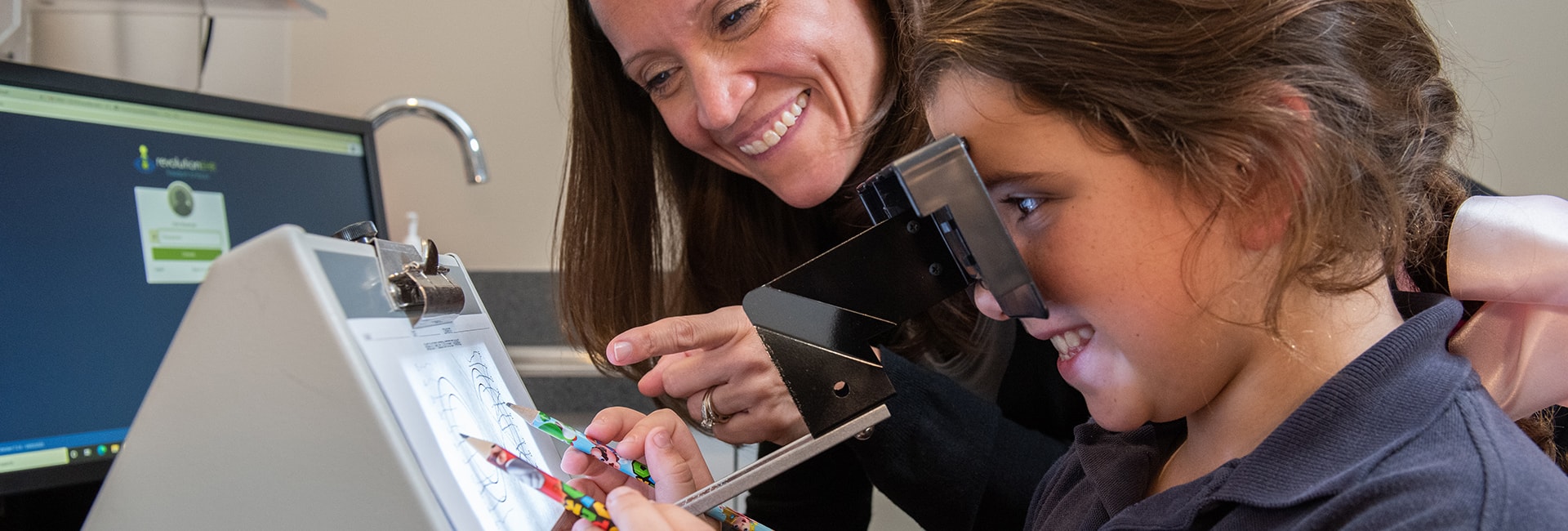Exercise For Your Eyes
Vision therapy helps strengthen the communication between your eyes and your brain through a combination of various activities and exercises. Both children and adults can benefit from vision therapy as long as there is proper guidance from their doctor and genuine dedication from the patient.
At Perspective Eye Center, we want to make sure we do our part to help you feel healthy and comfortable. That’s why Dr. Enfinger designs each vision therapy curriculum unique to each individual. Vision is more than just the eyes, it is how the brain perceives the surrounding world & interacts with it. Vision therapy can undo inefficient neurological adaptations and create more efficient, more comfortable binocular vision. Treatment length varies, depending on the extent of the conditions requiring treatment. Consistent attendance and home therapy have a direct impact on how quickly a patient finds success in vision therapy.




